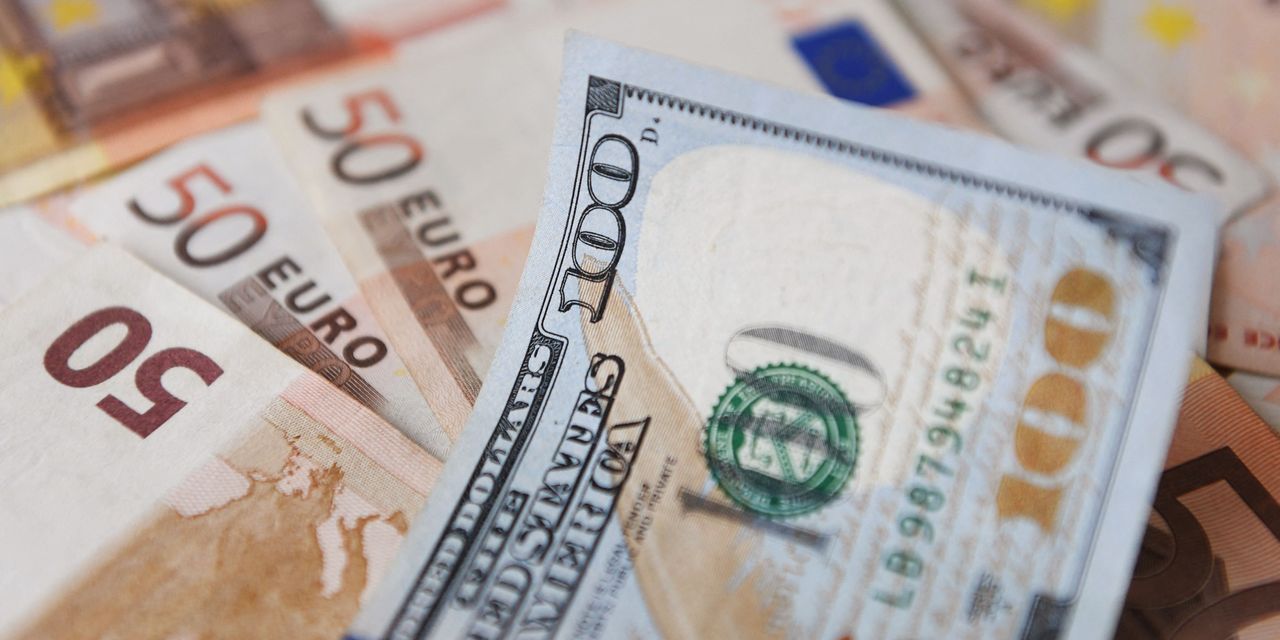The euro fell below parity against the dollar again as traders dumped the single currency amid renewed fears surging energy costs would cause recession in Europe.
The buck’s bounce was also backed by higher U.S. bond yields and a general “risk-off” tone across markets as investors worried that the Federal Reserve would remain hawkishly steadfast in its battle with multi-decade-high inflation.
The euro
EURUSD,
was trading at $1.0003, having earlier touched $0.9922, near its weakest in 20 years.
Germany’s central bank said on Monday that a contraction in the eurozone’s powerhouse is increasingly likely as natural gas prices surged across the continent in response to Russia curtailing supplies.
“Declining economic output in the winter months has become much more likely,” the Bundesbank said in its monthly report. “The high degree of uncertainty over gas supplies this winter and the sharp price increases are likely to weigh heavily on households and companies.”
Forex observers said the euro was talking the news on the chin. “The energy crunch remains an overarching threat to economic stability in Europe, as gas prices touch new highs. Euro FX is back at trading at parity vs US dollar, as the last bear market rally is showing signs of fading,” said Luis Costa, currency strategist at Citi.
The ICE Dutch TTF Gas Future front-month contract, the European benchmark, jumped 19% to 291 euros a megawatt hour. The equivalent contract was less than 30 euros a year ago. This fed into electricity prices, with German year-ahead power jumping as much as 21% to a record 678 euros per megawatt hour, according to Bloomberg.
The latest price jump comes as Russia said that from Aug. 31 it would shut down the crucial Nordstream pipeline for three days of maintenance. The conduit already has been operating at only 20% capacity for weeks as Moscow retaliates for sanctions imposed because of its invasion of Ukraine.
Observers fear the extreme energy costs will require rationing across parts of Europe’s industrial sector and adding to the uncertainty are low levels in the Rhine, caused by drought, which are curtailing the transport of materials within Germany’s industrial heartland.
A survey released last week revealed German investors are the most concerned about prospects for the world’s fourth biggest economy than at any time since the eurozone debt crisis in 2012.
Adding to downward pressure on the euro/dollar cross was expectations for the relative trajectory of monetary policy from the European and U.S. central banks.
Traders are becoming more convinced that while the ECB will remain cautious in raising borrowing costs from its current zero level, as it seeks to damp inflation, the Federal Reserve is likely to hike rates to 3.5% or more by April next year.
The policy-sensitive 2-year U.S. Treasury note
TMUBMUSD02Y,
is yielding 3.301% and the German equivalent
TMBMKDE-02Y,
is 0.888%, making such dollar assets more attractive.
